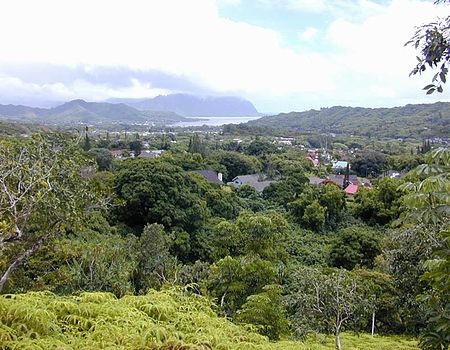ʻĀhuimanu

Ahuimanu or ʻĀhuimanu (Hawaiian pronunciation: [ʔaːhuwiˈmɐnu]) is a census-designated place (CDP) in the City & County of Honolulu, Hawaii, United States, on the island of Oahu. In Hawaiian ʻāhui-manu means "cluster of birds". Ahuimanu is spread out beneath the steep windward pali (cliff face) of the Koolau mountain and separated by a low ridge from Heeia Kea. Thus, this area is mostly inland and not directly on Kaneohe Bay. However, one neighborhood spreads over the ridge and along Kamehameha Highway where there is private access to the bay shore. Proximity to the pali gives the place a generally wet climate. As of the 2010 Census, this largely residential area had a population of 8,810. A small commercial mall is located here across the highway from the Valley of the Temples Memorial Park, a large cemetery noted for its Byodo-In Temple. The U.S. postal code for Ahuimanu is 96744.
Excerpt from the Wikipedia article ʻĀhuimanu (License: CC BY-SA 3.0, Authors, Images).ʻĀhuimanu
Apau Loop, Kailua Ahuimanu
Geographical coordinates (GPS) Address Nearby Places Show on map
Geographical coordinates (GPS)
| Latitude | Longitude |
|---|---|
| N 21.443333333333 ° | E -157.84 ° |
Address
Apau Loop
Apau Loop
96744 Kailua, Ahuimanu
Hawaii, United States
Open on Google Maps









